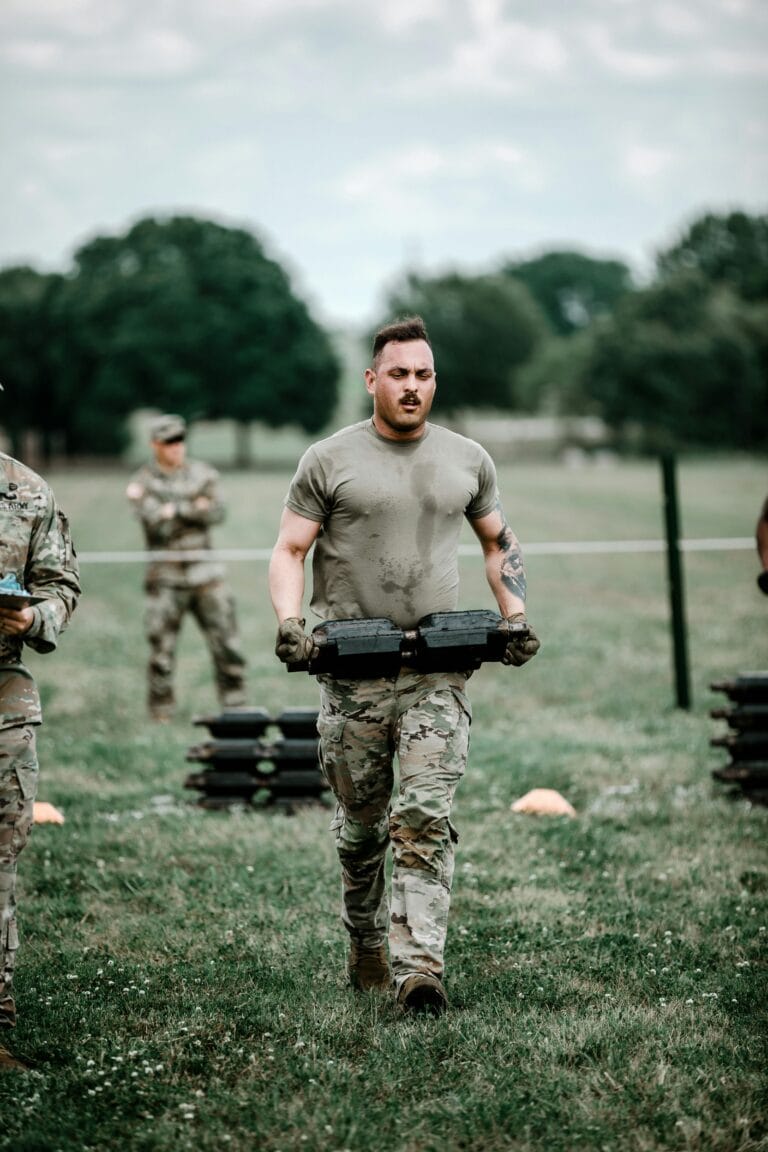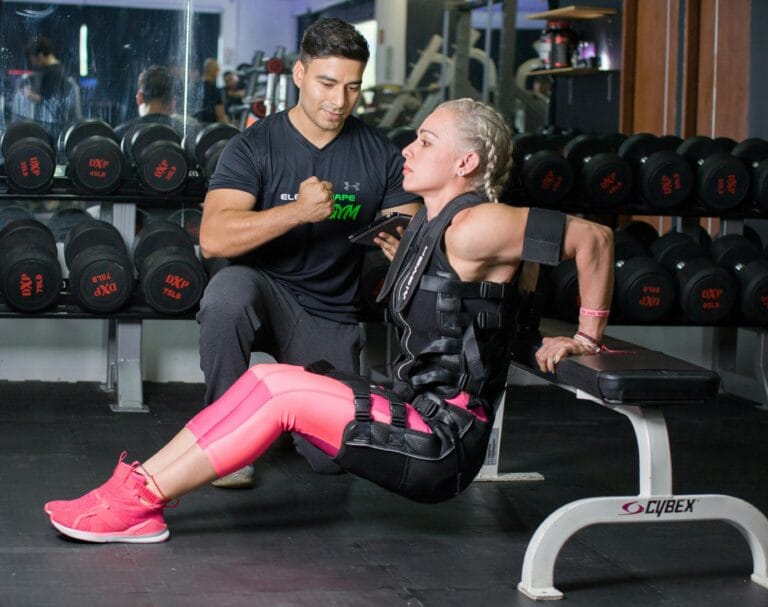FREE SHIPPING OVER $50
Want to Live Longer? Science Reveals How Often You Should Exercise—And What Actually Works

The desire to live a long, healthy life—a concept scientists call longevity—is universal. While factors like genetics and diet play crucial roles, a growing body of evidence confirms that regular physical activity is one of the most powerful tools we possess for dramatically improving our healthspan and lifespan. Researchers have moved past simply recommending “more movement” and have now uncovered surprisingly specific guidelines on how much and what kind of exercise unlocks the greatest longevity benefits.
So, if your goal is to add years of high-quality life, you need to know the minimum effective dose and the optimal exercise types that the science supports. Forget the myths about needing to train like an elite athlete. The good news is that the most impactful habits are surprisingly achievable, offering substantial protection against all-cause mortality, cardiovascular disease, and other chronic illnesses. Let’s delve into the specific weekly minutes and the essential workouts that your body needs to thrive for decades to come.
The Minimum Effective Dose: How Much Exercise is Enough?
When scientists talk about the minimal amount of activity required to significantly impact your lifespan, they point to two categories of aerobic exercise: moderate-intensity and vigorous-intensity. Think of moderate as a brisk walk where you can talk but not sing, and vigorous as running or swimming laps where holding a conversation is difficult. The health and medical communities have established clear, evidence-based targets for adults.
The widely accepted benchmark from major health organizations, which serves as your essential foundation for longevity, is simple to remember: aim for either 150 minutes of moderate-intensity aerobic activity per week or 75 minutes of vigorous-intensity aerobic activity per week, or an equivalent combination of the two. This relatively modest commitment—which breaks down to about 30 minutes of brisk walking five days a week—can reduce your risk of premature death by 20% to 32%. This is your non-negotiable floor; hitting this level offers a profound initial reduction in your all-cause mortality risk.
However, the science doesn’t stop at the minimum dose. If you’re looking to maximize your health benefits, research strongly suggests pushing beyond the base level. Studies indicate that doubling the minimum recommendations—aiming for 300 minutes of moderate exercise or 150 minutes of vigorous exercise each week—provides even greater protection. Those who consistently hit this sweet spot often experience the maximum reduction in mortality risk, with some studies showing a 41% to 47% lower risk of death compared to those who are inactive. This suggests that while 150 minutes is great, aiming closer to 300 minutes of moderate activity per week may be the optimal target for boosting your long-term health.
Interestingly, while pushing past this optimal dose (such as doing over 600 minutes of moderate or 300 minutes of vigorous activity) won’t harm you, it often provides little to no additional longevity benefit. The key takeaway is to establish a consistent, sustainable routine that lands within the most beneficial range of two-and-a-half to five hours of moderate activity per week, or half that for vigorous activity.
The Power of Intensity: Moderate vs. Vigorous Activity
When designing your ultimate longevity workout plan, you need to think about the intensity of your movement. For many, moderate-intensity exercise is the perfect entry point and the foundation of a sustainable routine. Activities like brisk walking, cycling slower than 10 mph, or even heavy gardening fit this category. It’s safe, easy to incorporate into daily life, and consistently linked to a lower risk of cardiovascular disease. The benefits of moderate activity continue to increase up to that 300-minute mark, reinforcing its role as a key component of a successful lifespan extension strategy.
On the other hand, vigorous-intensity physical activity offers a time-saving equivalent. You can achieve the same health benefits in half the time. Running, swimming laps, or engaging in high-intensity interval training (HIIT) are examples of vigorous exercise. For those short on time, substituting a brisk walk for a quick run or high-effort cycling session can be highly efficient for increasing VO2 max, which is a powerful predictor of longevity.
Recent scientific findings highlight the exceptional role of short, intense bursts of movement, known as Vigorous Intermittent Lifestyle Physical Activity (VILPA). These are the brief, sporadic bouts of fast walking, stair climbing, or power-carrying groceries that last only one to two minutes.11 Even these micro-workouts, when accumulated throughout the day, have been associated with a significantly lower risk of death, especially from cancer. This insight offers a flexible path for busy individuals, demonstrating that every effort counts toward a longer, healthier lifespan.
Ultimately, experts agree that the optimal exercise routine for longevity incorporates a combination of both intensities. This approach allows you to reap the broad spectrum of health benefits, from cardiovascular strengthening with steady-state cardio to the efficiency and metabolic boosts of high-intensity effort.
The Unsung Hero: Why Strength Training is Non-Negotiable
While aerobic activity—the classic “cardio”—gets a lot of attention for its impact on heart health and lifespan, neglecting strength training is a critical mistake in any longevity strategy. The science is clear: strength, muscle mass, and bone density are directly tied to how long and, more importantly, how well you live.
Researchers recommend including muscle-strengthening activities for all major muscle groups on two or more days per week. This is non-negotiable for maximizing lifespan extension. Resistance training does far more than just build visible muscle; it plays a vital internal role. As we age, we naturally begin to lose muscle mass, a process called sarcopenia, which dramatically impacts metabolism, mobility, and the risk of falls. By engaging in strength workouts—whether using free weights, resistance bands, or your own body weight—you actively fight this decline.
The combined effect of a balanced routine is truly synergistic. Studies on mortality risk reveal that those who meet both the aerobic (150 minutes moderate or 75 minutes vigorous) and the strength training (two sessions per week) guidelines see the largest reduction in all-cause mortality. The addition of strength exercise to a cardio routine significantly outperforms doing either activity alone, reducing the risk of death by up to 47%. This is largely because strength training enhances bone health, improves blood sugar control, reduces the risk of heart disease by managing metabolic syndrome, and even contributes to better cognitive health. For women, in particular, this type of exercise is crucial for maintaining bone mineral density, offering greater resilience against injuries later in life.
Building Your Optimal Longevity Workout Plan
The data provides a clear blueprint for an optimal exercise plan focused on longevity. Your goal is to consistently hit the sweet spot for both aerobic and muscle-strengthening activities.
1. Master Your Aerobic Base
To maximize lifespan benefits, dedicate time each week to elevating your heart rate.
- Moderate Intensity Target: Aim for 150 to 300 minutes per week. This can be as simple as a 30-minute brisk walk five days a week. It’s the easiest component to start and sustain, offering immediate mood and circulation benefits.
- Vigorous Intensity Integration: Swap out some moderate sessions for more intense activity to save time and boost cardiovascular fitness. A 15-minute run is roughly equivalent to a 30-minute brisk walk. Prioritizing VO2 max improvements through steady-state running, cycling, or swimming is a strong marker for long-term health. Consider adding short bursts of high-intensity efforts, like quick stair climbs, into your daily routine to leverage VILPA.
2. Commit to Resistance Training
You must work your major muscle groups at least twice a week.
- Frequency and Focus: Schedule two full-body strength workouts per week. Focus on movements that use multiple muscle groups, known as compound movements, such as squats, lunges, push-ups, rows, and overhead presses.
- Duration: These sessions don’t need to be marathons; 40 to 60 minutes of focused resistance exercise is highly effective. Use a weight or resistance level that challenges your muscles to fatigue within 12 to 15 repetitions. Consistency trumps volume here, especially as you age.
3. Don’t Forget the Foundation: Daily Movement
The best routine is the one you can stick with every day. The single most common activity among the world’s longest-living people is simple: walking. While 10,000 steps per day is a popular target, science suggests significant longevity benefits kick in well before that, often leveling off between 8,000 and 10,000 steps for younger adults, and 6,000 to 8,000 steps for older adults.
Movement throughout the day also counteracts the dangers of being sedentary. Excessive sitting time is considered a major independent risk factor for chronic disease, even if you hit your weekly exercise goal. Therefore, break up long periods of sitting with short walking breaks or stretches. Incorporating activities like yoga or Tai Chi a few times a week is also highly recommended, as they directly improve the mobility, balance, and stability that prevent falls and injuries—a significant threat to an active lifespan.
The Real Secret: Consistency Over Volume
Ultimately, the science confirms that the most powerful component of your longevity exercise plan is not the specific number on a scale or a clock, but consistency. The benefits of physical activity accrue over time, forming a protective shield against disease. It’s better to maintain a realistic routine of 150 minutes of moderate activity every week for years than to sporadically train intensely for a few months and then stop.
Therefore, choose activities you genuinely enjoy. If you love to dance, make it your moderate activity. If you thrive on competition, join a tennis league for vigorous movement. When you find joy in the process, your exercise habits become a sustainable part of your life, not a temporary chore. By embracing a balanced blend of aerobic fitness and strength training, you are not just working out; you are making an evidence-based investment in a longer, healthier future. Start small, be consistent, and watch as science-backed movement reshapes your healthspan for the better.
Related Articles
- Fitness Over 45? These 5 ‘Healthy’ Habits Are Secretly Sabotaging Your Muscle Gains
- Doctors Say Slow Walkers Age Faster—Follow These Exercises to Add Years to Your Life
- Doctors Are Stunned: These 15 Mobility Tricks Have Seniors Moving Like They’re 30 Again
- Is Alzheimer’s Actually Type 3 Diabetes? What Doctors and Researchers Are Now Saying
- 10 Exercises That Could Be Dangerous After 60—Most People Still Do #7



